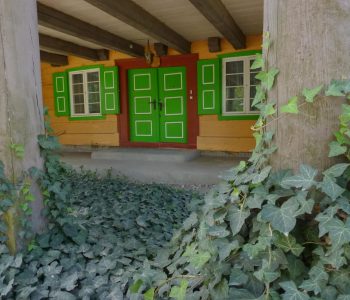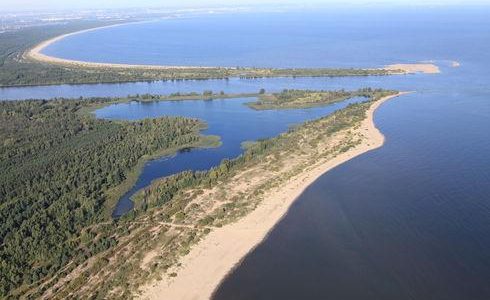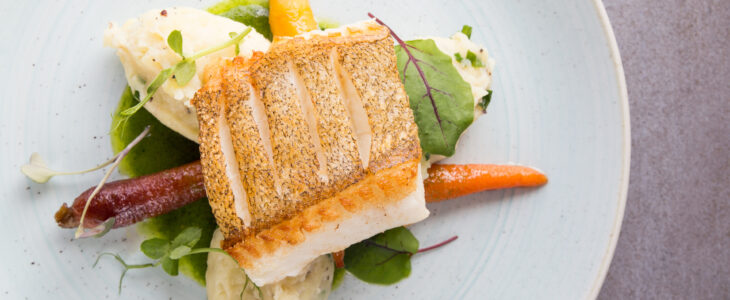.jpg)
Today’s Amber Route offers an amazing journey through centuries of tradition, which left its remarkable traces in Pomorskie. Many amber museum exhibitions, educational workshops, processing and polishing demonstrations, and also fashion shows, fairs, and open-air events, and finally amber-focused tourist products are the region’s strengths and highlights. The most interesting spots on the Amber Route are located in the Pomorskie Voivodeship. It is worth taking a thematic tour to the most fascinating amber-related sites, which are mostly located in Gdańsk, rightly called the World Amber Capital.
Amber.
Amber is a hard, petrified tree resin. There is over 130 types of fossil resins which can be found around the world. They differ by their origin, age, and tree species they come from. The Baltic amber dates back over 40 million years ago. Its largest deposits are located beneath the bottom of Gdańsk Bay. It is the only tree resin to contain up to 8% of succinic acid, which is a natural catalyst of cell metabolism – hence its health-related properties. Natural amber comes in an exceptional multitude of colours and varieties. Its hue and transparency depends on the conditions to which it was subject in its creation process and its progress through successive deposits. Basking in sunlight as it lays on dunes, weathering under sand with humidity and oxidisation changes, and compressed by the glacial mass – it naturally acquired the features that today are achieved artificially with great effort to follow the fashion trends.
Its extraordinary features, colour and scent attracted people since prehistoric times. It was collected on a massive scale as early as in the Stone Age (the Neolithic), traces of which were found in archaeological sites of Pomorskie, dating back 4.5 thousand years ago. That was the very beginning of what we call the Amber Route, which was not a single road, but rather a general direction of trade between the local markets and the South of Europe. It was not a route in the contemporary meaning, but a number of roads on which amber was transported from the Baltic Sea region to the Mediterranean civilisations. Most items left by the amber trails which started by the Baltic Sea and ran south towards the Adriatic, date back to the 1st and 2nd century A.D., when a Roman equestrian, named Julianus, set off for amber from the Roman Empire and reached the Baltic Sea. At that time, before the Migration Period, the amber routes formed, spreading the Roman culture and customs far to the north. For centuries amber was a popular and desirable commodity, not only among the Baltic coast locals, but also among the Phoenicians, Persians, Greeks, and Romans. Today the Amber Route is being reconstructed in a large part of Europe, from the Baltic countries to Greece and Italy. There are many museums, reconstructed period settlements, such as the Carnuntum in Austia and Faktoria in Pruszcz Gdański near Gdańsk, as well as different types of performances and historical shows.
Gdańsk.
The earliest traces of amber processing in Gdańsk date back to the late 10th century. Amber and its products were already being sold to other places in Poland and in the Western Europe. The 17th and 18th centuries are the peak of the artistic crafts in Gdańsk, in which amber was one of the most important materials. Gdańsk’s workshops produced many amber artworks, which were commissioned by wealthy citizens, noblemen, magnates, clergy, and Polish kings. Gdańsk amber products reached ducal and royal courts in the whole Europe, where they often became most valuable diplomatic gifts for popes, czars, sultans, caliphs, and other rulers of the mightiest European countries. Gdańsk is called the World Amber Capital, accounting for more than 70% of the global amber jewellery and other products production, distinguished by modern design and the highest quality. Gdańsk hosts the most important fairs of the amber industry – Amberif and Ambermart, as well as the Forum of the Amber Route Cities and the meetings of the World Amber Council.
Gdynia.
The city holds the biggest amber jewellery factory in Poland – Manufaktura S&A, which has opened its headquarters to organised groups of tourists, and has created an interesting programme for visitors, called “Amber Emotions”. Visitors can listen to stories and interesting facts, learn to distinguish a genuine and fake amber, touch it, and get to know its properties. Gdynia’s artistic district – Orłowo – also boasts strong ties with amber. An outstanding Polish writer, Stefan Żeromski, became fascinated by amber here, when he was spending his holidays in a small fishing cottage, writing his novel “Wind from the sea”. Today, the so-called “Żeromski’s house” is a seat of the Orłowo Friends’ Society, which runs cultural and educational activities. Since recently students of the Fine Arts School are being taught secrets of amber macrophotography. Producing images documenting the inside, the shape of organic inclusions, and the surface structure of individual amber pieces, which weather inevitably, helps the students to recognise and to become aware of the continuity of nature.
Sopot.
A city of artists and modern design in amber jewellery. It is here where Lucjan Myrta runs his business, creating monumental items out of natural variety of amber, filled with extraordinary images and intricate sculptures. The renowned sculptor and creator of the amber nightingale, Bogdan Mirowski, has also settled here. The Ambermoda gallery attracts everyone with excellent exhibitions, design, surprising forms, and combining amber with other gems and natural materials.
Słupsk.
The Słupsk Amber Lucky Bear – a talisman of luck, but primarily an artifact associated with the town. The amber figurine was found near Słupsk in the 19th century, but researchers claim it was an amulet of a bear hunter from 6,000 years ago. Currently, the original is held in the Stralsund Museum and an exact copy made by Słupsk artists is on display in the Town Hall. The establishment of the Amber Gallery in Słupsk is the personal achievement of the amber master Narcyz Kalski, whose passion, ambition, and primarily love for amber led to its opening. The gallery produces Art Nouveau jewellery, modern sculptures, applied art, and occasional statuettes of amber and silver. Painting, sculpture, and ceramics exhibitions are also a fixture. Lessons on amber complete the offer.
Pruszcz Gdański.
A town where history and tradition meet the present day. A trading post, the so called factory, was established in the contemporary Pruszcz Gdański area, on the no-longer-existing lagoon connected to the sea. The convenient location at the contact point of land and sea routes made it a place for merchants to trade various merchandise, including raw amber. The factory – Faktoria – quickly became an economic centre of the settlement area stretching between Tczew and Gdańsk, and covering the whole present Eastern Pomorskie. Final amber products brought considerable revenue, which led to the development of craftsmen’s workshops in Faktoria. In 2011 a reconstruction of the trade settlement was opened – not only presenting the living conditions of the former Pomorskie residents, but also providing museum lessons, and showing the old crafts. It has become the cultural and educational heart of the town.
Museums.
Amber is not just jewellery, but also a fascinating journey along the tourist route which runs through many museums. Thematic exhibitions presenting the history of the origin, extraction, processing, and use of this material, as well as many workshops and polishing shows, are attractions that just cannot be missed.
Fashion.
Amber is ubiquitous! In the world of fashion it appears as an original addition, but also as the main motif of collections by famous Polish designers. The Fashion and Amber Gala is always the most awaited event during the Gdańsk Amberif International Fair. Modern, daring ideas, and a multitude of inspirations, associations, materials, and patterns are characteristic features of the event, and also the proof of the timeless value of the “Baltic Gold”. Events such as Sopot Fashion Days and the open air fashion shows would not be the same without it.
Jewellery.
However amber is mainly associated with jewellery goods and jewellery art, it offers a surprising diversity of forms and shapes, as well as a modern design. It is not important whether the design is traditional or modern, though, as the decisive factor is the authenticity of the material. That is why you should ask for industry certificates or the Amber Passport when shopping in amber galleries. The latter is a consumer’s guide, which is also a purchase proof of an authentic product and a guarantee that good practices have been observed.
Design.
Innovative design, various forms of jewellery, and the surprising forms create the new image of amber, which is gaining more and more currency and success in the world. Amber is now much more than just a string of little stones. Combined with gold, silver, diamonds, and other gems, as well as natural materials, such as leather, it changes character in beautiful and unusual compositions. More and more items, both of everyday use and exclusive, are made of amber – powder compacts, chess sets… there are even USB flash drives in amber casing – and those are just a few examples.
Galleries.
The best-known, “Amber Fifth-Avenue” in Gdańsk is the picturesque sequence of streets named: Mariacka, Długa, and Długie Pobrzeże, where many workshops and galleries not only sell unique jewellery, but also provide an opportunity to see craftsmen at work, polishing and processing amber. The excellence of Gdańsk’s artists is recognised and appreciated around the world. They were the ones to create the famous Amber Chamber and the Amber Altar in St. Bridget’s Church. Each of the Pomorskie cities and towns has its own amber masters, goldsmiths, and jewellery designers, who present extraordinary decorations, sculptures, and larger amber items such as candlesticks, clocks, and caskets in their galleries.














